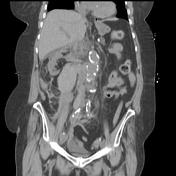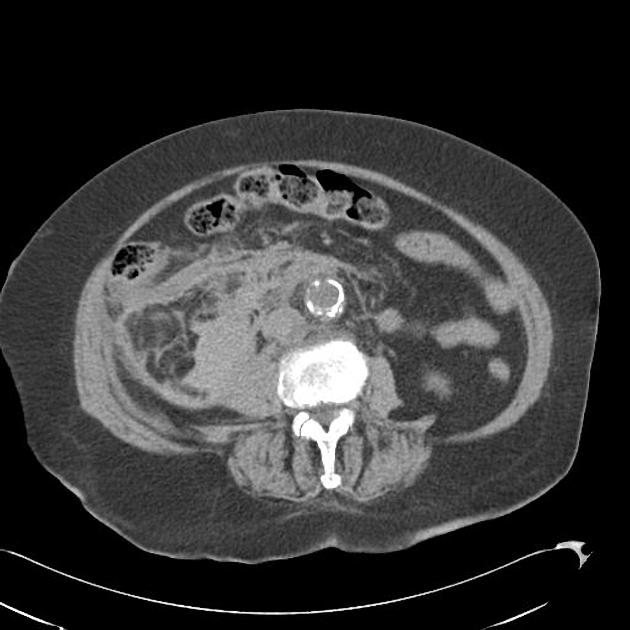Presentation
Severe lumbar back pain and right hip pain.
Patient Data





Abdominal aortic aneurysm detected measuring 4.7cm x 4.9cm in maximal dimension at the L2 vertebral body extends from below the level of renal artery origins to above the aortic bifurcation.. Large right sided retroperitoneal hematoma appears to arise from this segment of the abdominal aorta. This hematoma measures 10cm (AP) x 8.4cm (trans) x 12.6cm (SI) and displaces the right kidney laterally. There is a small/moderate amount of free intraperitoneal fluid within the pelvis.
Conclusion
Ruptured abdominal aortic aneurysm, with a large retroperitoneal hematoma.
Case Discussion
Key learning points:
- 80% rupture into the retroperitoneum and 20% rupture into the peritoneal cavity as well as into the retroperitoneum
- the classical clinical triad (hypotension, pain and pulsatile mass) is only present in 25-50% of patients with a ruptured AAA
- there are many indicators of increased AAA rupture risk including size >7cm; increasing size >1cm per year; discontinuity of calcification and hyperattenuating crescent sign
- very high mortality of >90%




 Unable to process the form. Check for errors and try again.
Unable to process the form. Check for errors and try again.